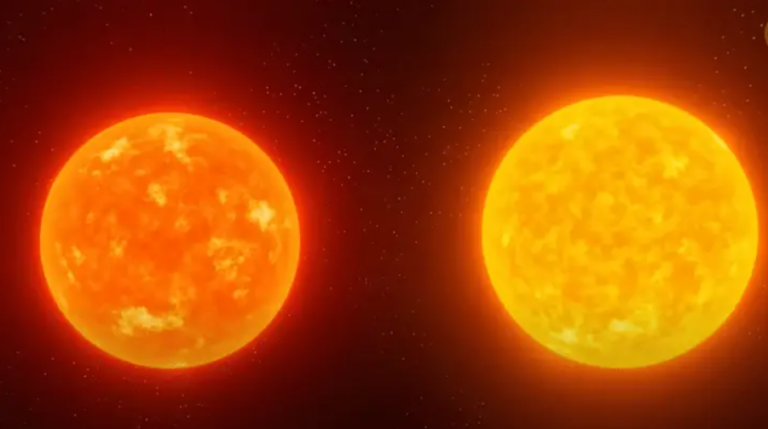This ‘Solar Twin’ With Identical Traits to Our Sun Discovered 184 Light-Years Away
The Sun, once part of a dense star cluster, was separated from its siblings by the Milky Way’s tidal forces billions of years ago.
Astronomers said that they have identified another star called HD186302 which is almost identical to the Sun possibly formed in the same system. This discovery will help us understand how the early solar system of the sun was formed with the sun’s sibling stars and how they went on to leave the solar system and scatter in the galaxy. Through 17 000 stars examination with the help of such spectrographs and GAIA mission data researchers have found this solar twin. HD186302 could harbour properties of the conditions that presided over the birth of the Sun and might even have habitable planets in it. In subsequent studies, people will look for other planets orbiting around the HD186302 in order to know if Earth-type planets may develop in similar conditions.
Regarding this picture, I guess everyone of us must have at least once dreamed about getting a brother/sister separated at birth à la ‘Parent Trap’. Though that is still a pipe dream for many people, it is a reality for the Sun.
An international team of astronomers has made an extraordinary discovery: a star which may have surely formed in the same part of the galaxy as the star we call the sun. Following detailed properties of hundreds of Stars in Milky Way, the researchers believed that they have not only detected solar sibling but also true solar twin.
An even closer neighbor is the star called HD186302 that is believed to be almost the clone of the Sun as it is only the second close solar twin to be discovered. It could aid the science community in putting together the origination of the Sun and its brothers in sister, or discover planets agreeable for habitation in the twin’s path.
A Turbulent Past
The Sun still dwells in the region contributing comparatively small share to the total brilliance, but when the Earth was born, billions of years ago, it was surrounded by numerous, bright and very active young stars – the siblings. Like all the stars, it was formed in a giant star’s cradle along with thousands of other stars. The presence of tidal forces of the Milky Way destroyed it over time thereby separating the stars into various extents across the galaxy. The search for such stars has not been easy because they migrate far from where they originate from.
However, as we have seen, the AMBRE project has experts on its side ready to discover the Sun’s ancient family. This is the AMBRE project, a cooperation between ESO and the Observatoire de la Côte d’Azur which employs databases of spectrographs and data from the ESA GAIA mission to determine ages, chemical patterns and movements of stars in the Milky Way. The scientists at Portugal’s Instituto de Astrofísica e Ciências do Espaço (AI) employed a huge data set for this purpose and worked on 17 000 stars.
Mirror Image
Recently, while analyzing the space information scientists pinpointed the star that looks identical to the Sun. Also known as HD186302, it is classified as main sequence star with an estimated distance of 184 light years from the solar system. There are many similarities between Monoceros and the sun such as age, metallicity, chemical composition and even carbon ratios differing in terms of isotopes. In other words, this star seems almost exactly like our Sun, and thereby further illustrates the importance of relying on sub ложӀ Leon Cohen. HD186302 is one of only two stellar siblings ever found and the first one is identified in 2014 which is known as HD 162826.
By identifying these counterparts, astronomers say they may be able to learn more about circumstances under which these stellar siblings were born and how they may have flared up their initial stellar neighborhood and other sibling stars. This also brings other interesting questions in terms of whether like the Sun could HD186302 support life and potentially habitable worlds.
“Some theoretical calculations indicate there is some probability life migrated from Earth to other planets or exoplanetary systems during the late heavy bombardment epoch If our lucky, our twin star has a rocky planet in the right zone, and if this planet undergone ‘panspermia’ from Earth, then we have Earth 2. 0 orbiting Sun 2. 0,” the study leader Vardan Adibekyan summed up.
To pursue the work envisioned in this study, the team will look for planets around HD186302 with the help of the ESO’s new spectrograph ESPRESSO as well as the HARPS spectrograph. If planets are found, researchers could then compare those formed around the Sun to planets around one of its siblings, which give information on what kind of planets that could have formed out of the Sun’s parent star cluster.
Do not forget to share your opinion with us to provide you with the best posts !




0 Comments